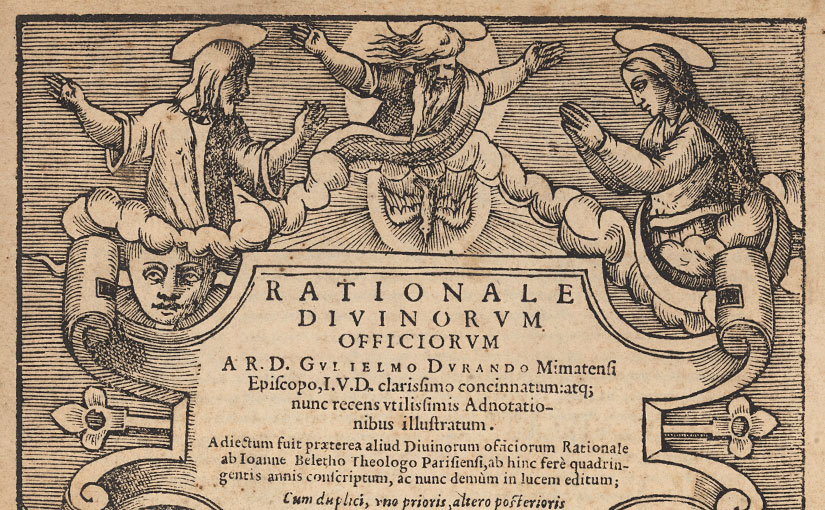by Julia A. Schneider, Ph.D, Medieval Studies Librarian
Treatises on the Catholic Liturgy emerged as a genre of commentary during the Middle Ages (ca. 500-1500 CE), providing explanations for some or all aspects of the church’s religious ritual, including the Mass, the Divine Office, the Sacrament of Baptism, Ordination, and other rites, as well as church buildings and furnishings, such as vesture, candles (and their placement), bells, and the like.1 Although the reason for the treatises may have stemmed from necessity, whether due to the institution of reforms of liturgical practice or to the interest of particular bishops, the authors of many of these commentaries sought to provide theological background and spiritual edification for readers and preachers alike, aiding in the broader understanding of particular aspects of the Catholic liturgy. This deeper understanding provided for more fruitful meditation on the content and spiritual effects of the ritual. As with commentary on the scriptures in the Middle Ages, composers of these treatises on the liturgy provided their interpretations in multivalent senses, including allegorical understandings alongside (and sometimes instead of) historical or literal interpretations of the various actions, prayers, furnishings, and ministers involved in the ritual.
Although modern scholars have not published as extensively about the genre as they have about other medieval commentary types, existing manuscripts and library inventories indicate that they were important texts to be studied. Medieval authors tended to “recycle” the works of other authors by weaving the work of those earlier authors into their own commentaries; the manuscript transmission rate of texts from this genre, whether directly or through borrowing suggests a rather broad readership of treatises on the liturgy. That the dissemination of some of the most popular commentaries continued well into the print period, even as European ritual practices were reviewed and codified into a revised, unified Roman Rite,2 testifies to their use and usefulness.
Hesburgh Libraries Rare Books and Special Collections holds several witnesses to this early print tradition for liturgical commentaries. For this blog post, we will examine five of our printed treatises on the liturgy. Four of the five include versions of the commentary Rationale divinorum officiorum, which dates from the end of the thirteenth century and was written by William Durand, Bishop of Mende († 1296). Containing eight books, it provides encyclopedic commentary on all aspects of the rites of the liturgy, as well as church furnishings, vesture, and other topics. In addition to the Rationale, Durand compiled a Pontificale (the liturgical book including rites particular to the bishop) and composed the Speculum iudicale (Mirror of Canon Law), along with other works.
In composing the Rationale, Durand lifted text from commentaries by Pope Innocent III (1161-1216), John Beleth (1135-1182), Amalarius of Metz (c. 755-850), and others. It was an extremely popular work, as liturgical commentaries go! One hundred and thirty-nine manuscripts currently exist that were produced during the one hundred and sixty year period between the first manuscript version of the Rationale and its first printing.3 This may not seem like a lot of evidence of interest in the text by our contemporary standards, but given that the literacy rate was less than 20% during the Middle Ages,4 given that texts were copied entirely by hand during this period, and given the ecclesiastical audience for the text, this number is indicative of the status of a late medieval best-seller. Pointing to continued interest in Durand’s text into the modern period is the fact that forty-four printed editions of the Rationale–whole or in part–are known to have been printed between 1459-1500, with a total of one hundred and eleven different editions printed by the end of the nineteenth century.5
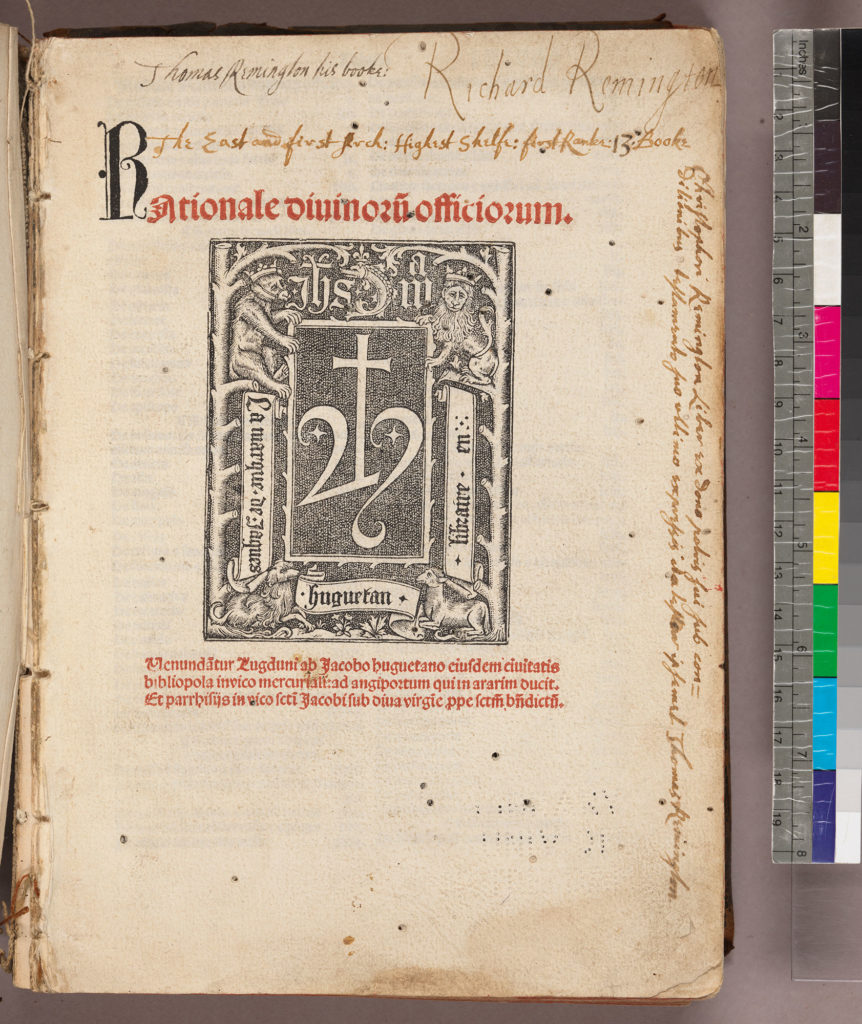
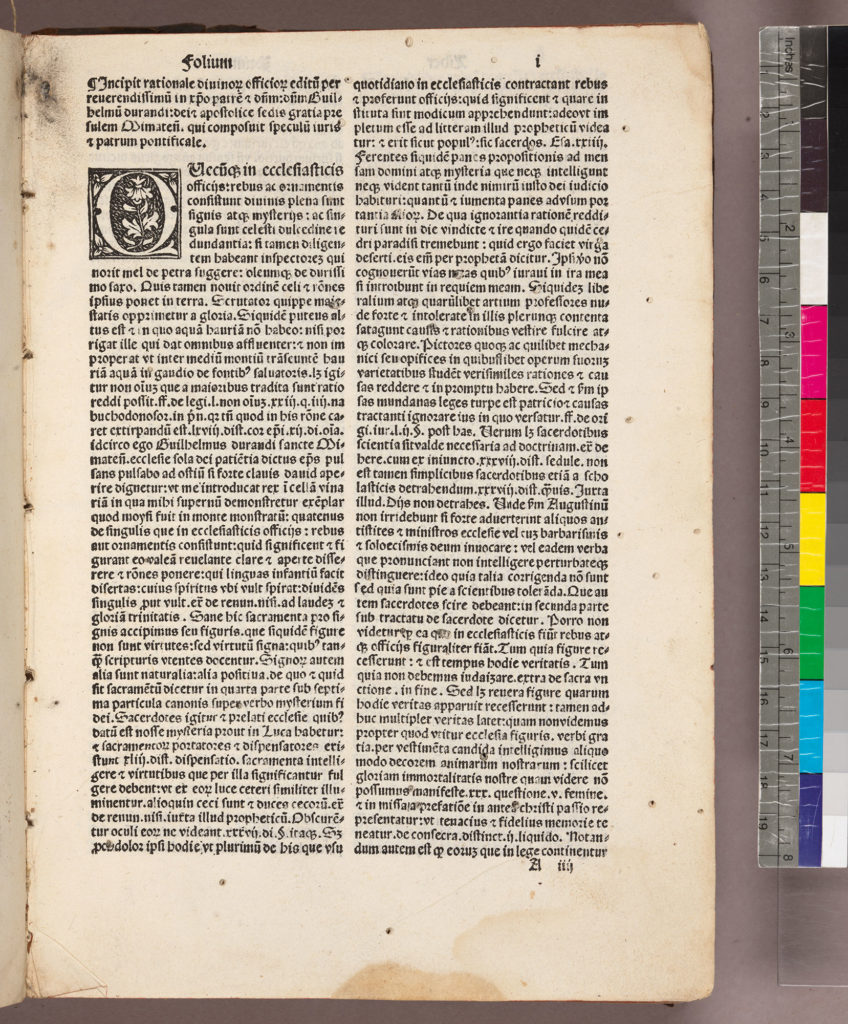
The earliest of the printed versions of the Rationale in Hesburgh Libraries’ holdings was printed by Jacques Huguetan in Lyon, c. 1503 on two hundred and twenty-three folios, and includes Huguetan’s printer’s mark. It contains historiated initials which were added after printing (mimicking the process of manuscript illumination), and some of those initials are missing.
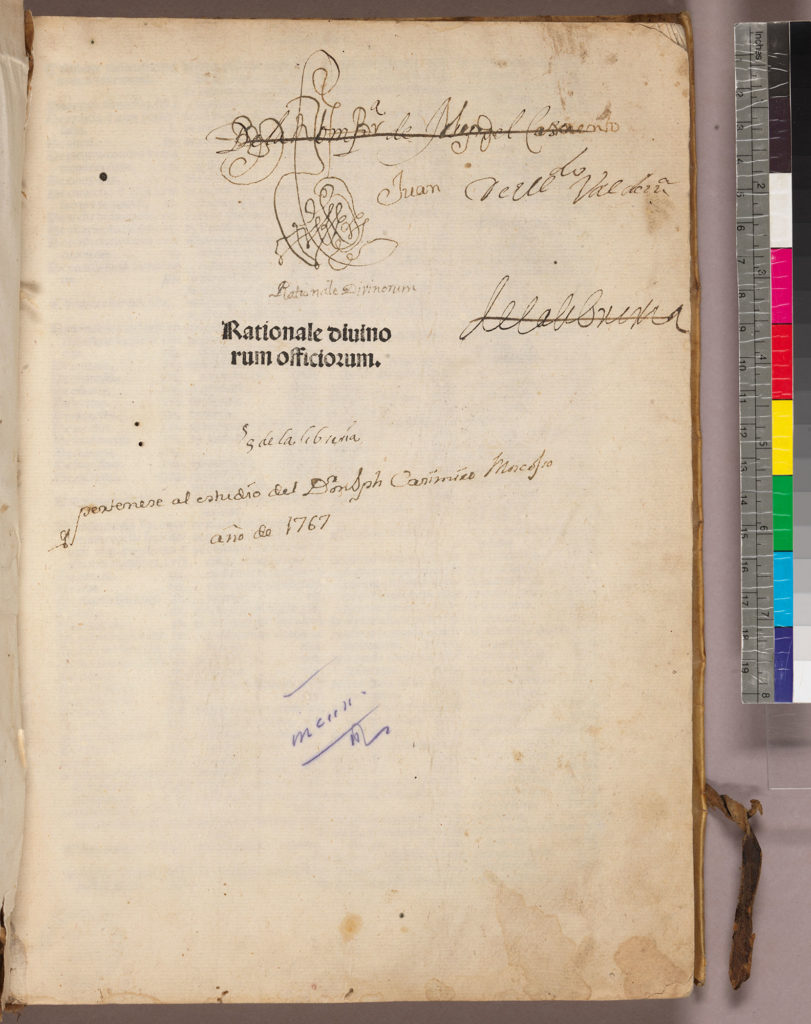
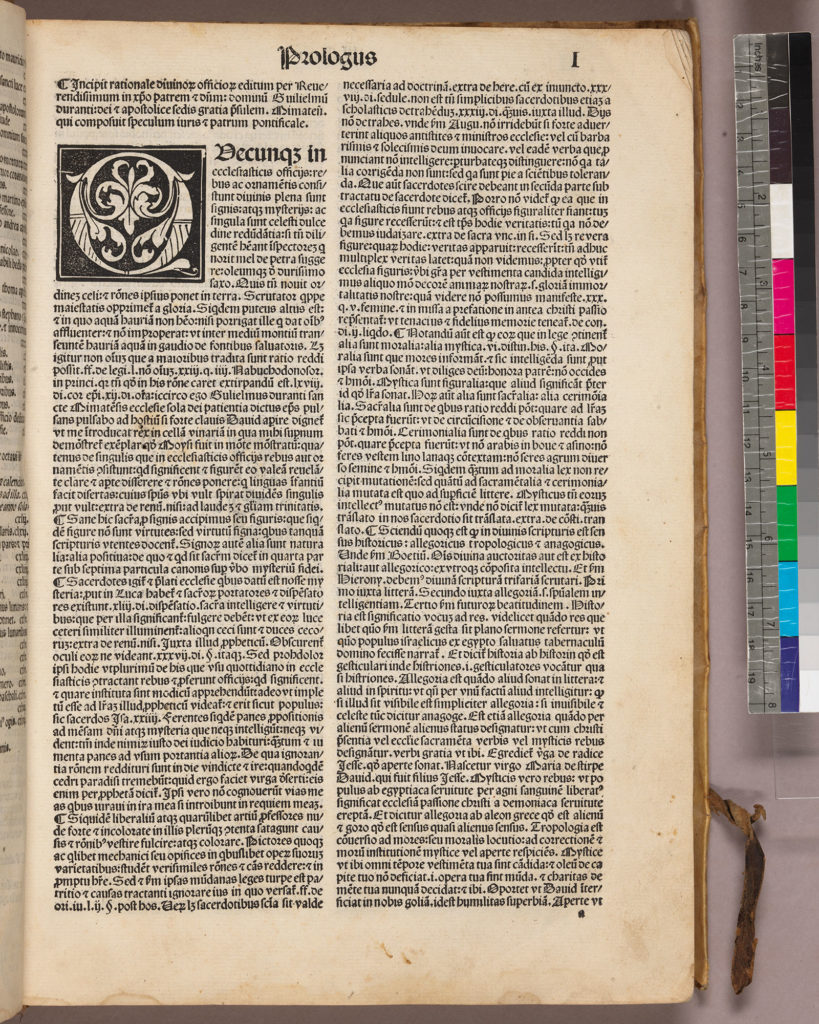
The second version of the Rationale examined here was acquired as part of the José Durand Collection and was printed in Venice in 1509 by Peiro Quarengi. It provides a complete version of the text in one hundred and forty-seven leaves including both large and small initials throughout the text. These two represent two of the twenty-five versions of the Rationale printed between 1500-1519.6
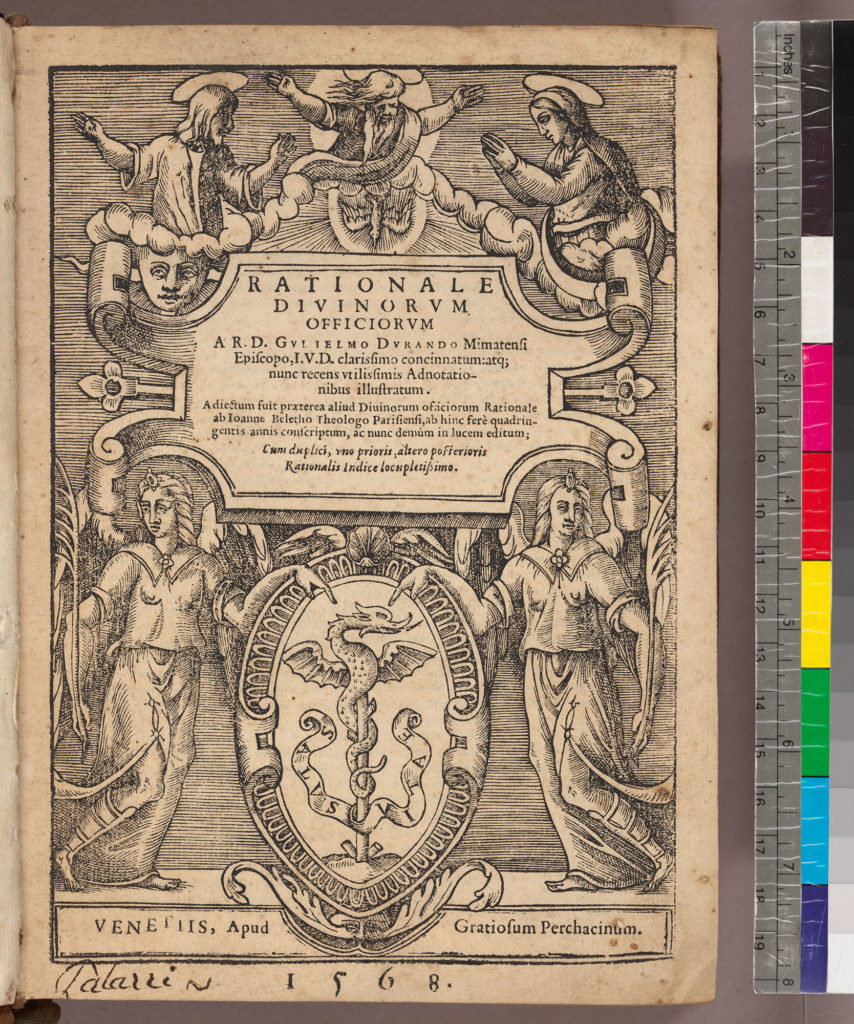
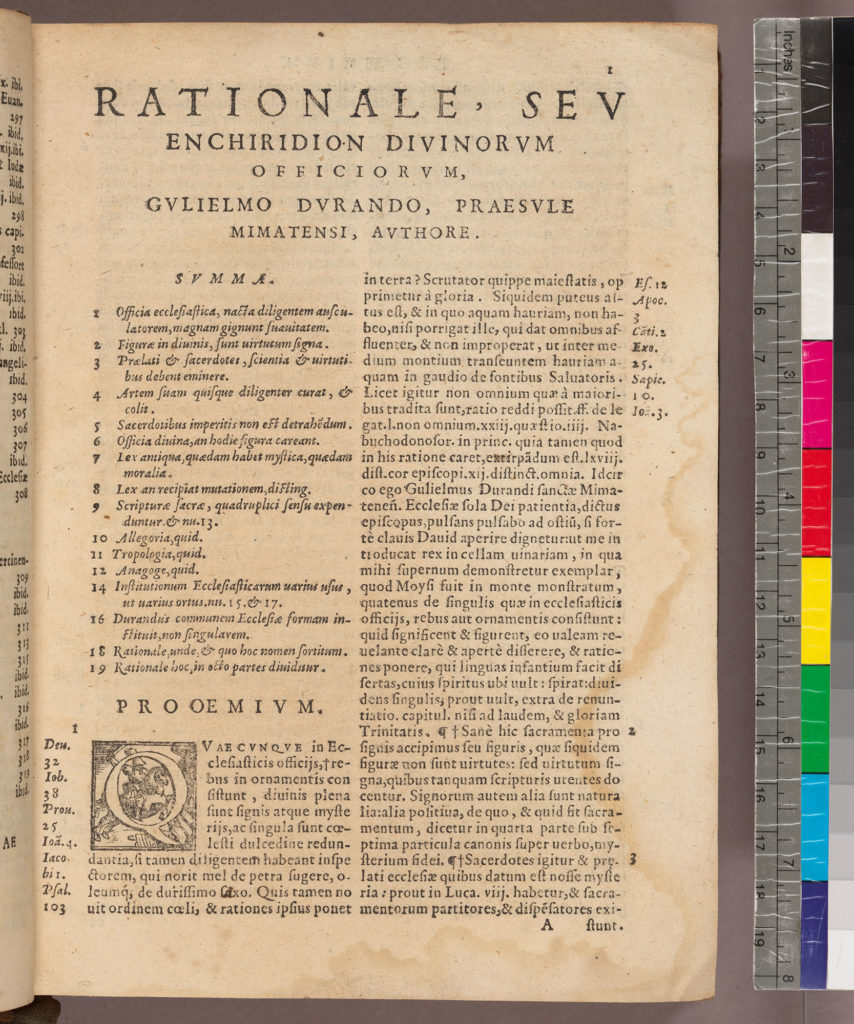
Also from the Durand Collection, another of the later editions of the Rationale was printed in 1568 in Venice by Grazioso Percaccino. It contains three hundred and twenty-two leaves and includes a frontispiece; there are initials for each section as well, with some of them planned but absent.
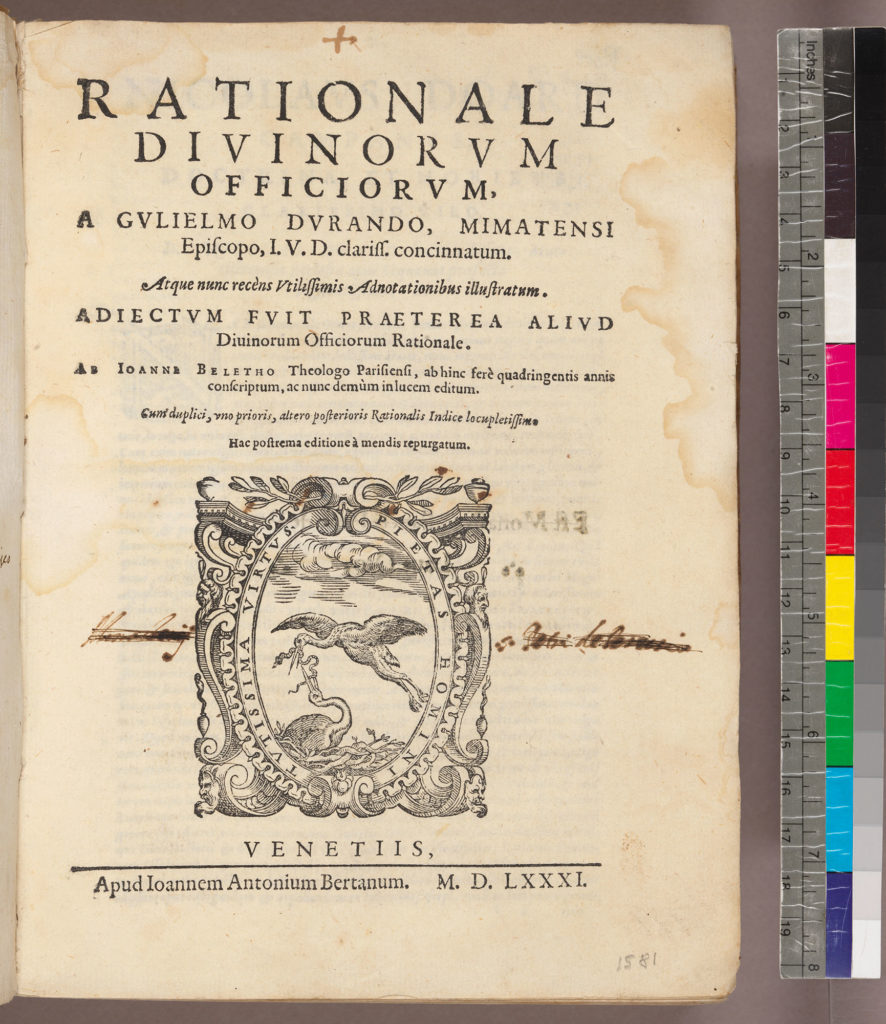
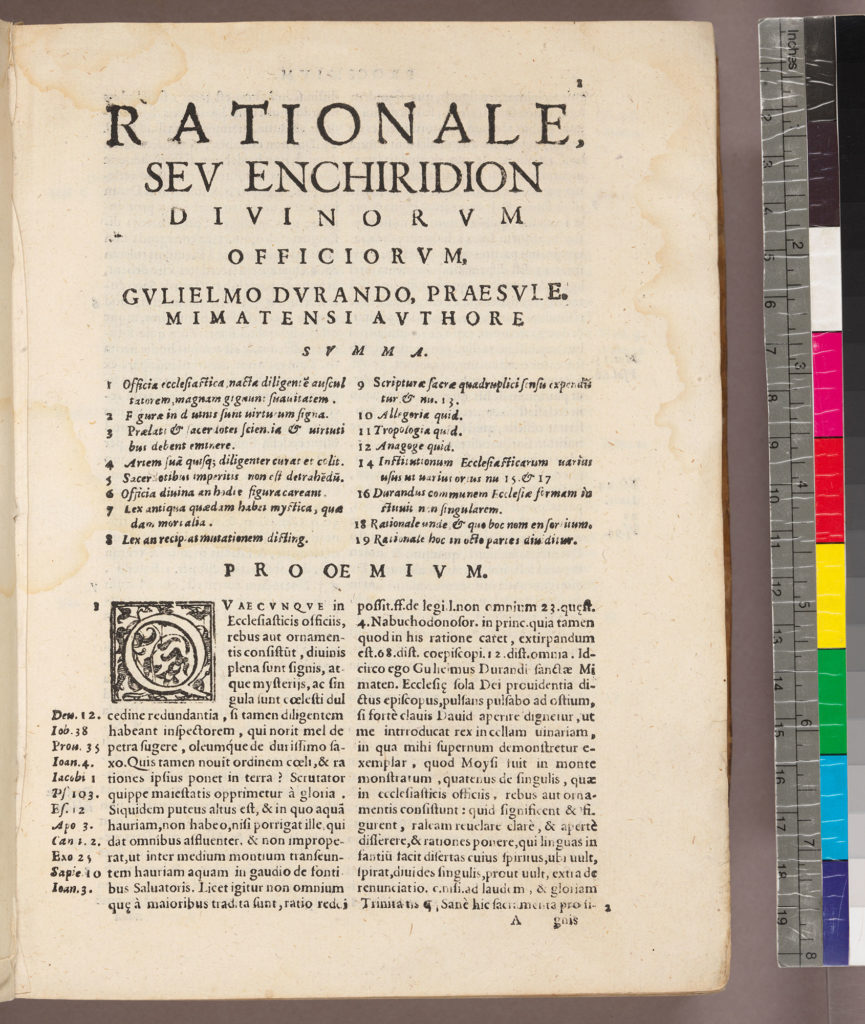
The final version of the Rationale we will reference in this post was printed in 1581, also in Venice, by Giovanni Antonio Bertano. It contains three hundred and seventy-five leaves. In this version, William Durand’s text is appended by John Beleth’s twelfth-century treatise, Summa de ecclesiasticis officiis. Astrik L. Gabriel, O.Praem. (1907-2005), former director of Notre Dame’s Medieval Institute, gave this volume to the Hesburgh Libraries.
These are but four examples of the early print versions of William Durand’s Rationale from the sixteenth century. The demand for new versions of this text began to dwindle after 1672.7 His name was all but forgotten until, during the mid-nineteenth century, a resurgence of interest in manuscript studies and a subsequent pastoral and liturgical renewal occurred that gave rise to the composition of new treatises on the liturgy and an increase in regard for medieval liturgical forms.
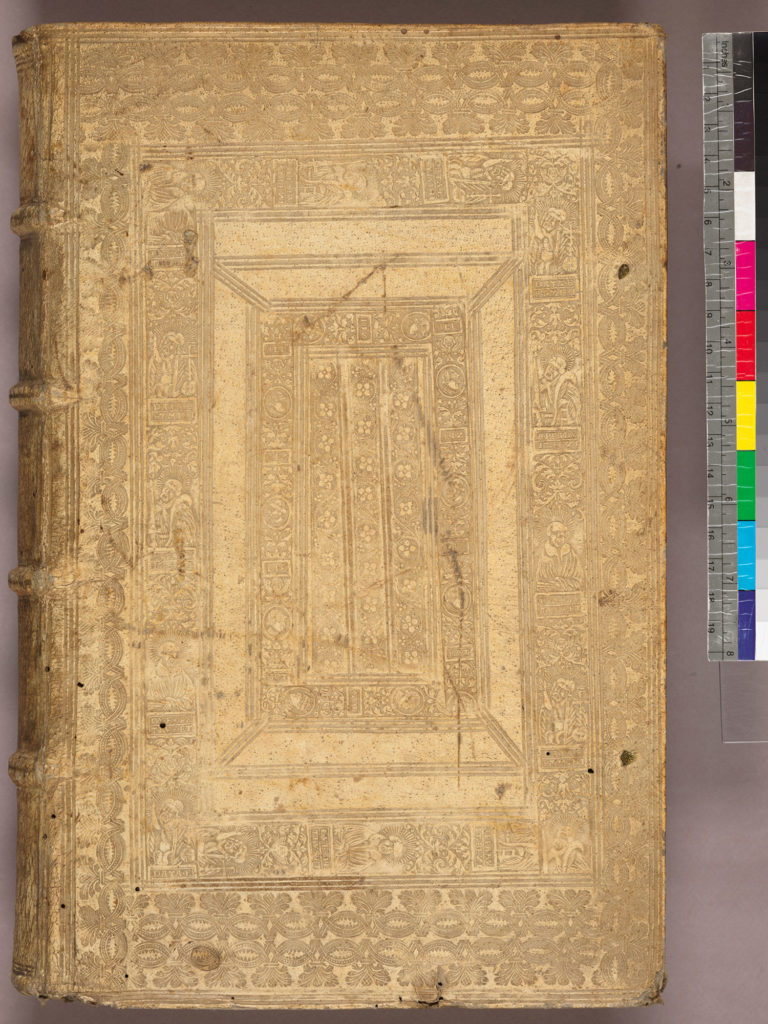
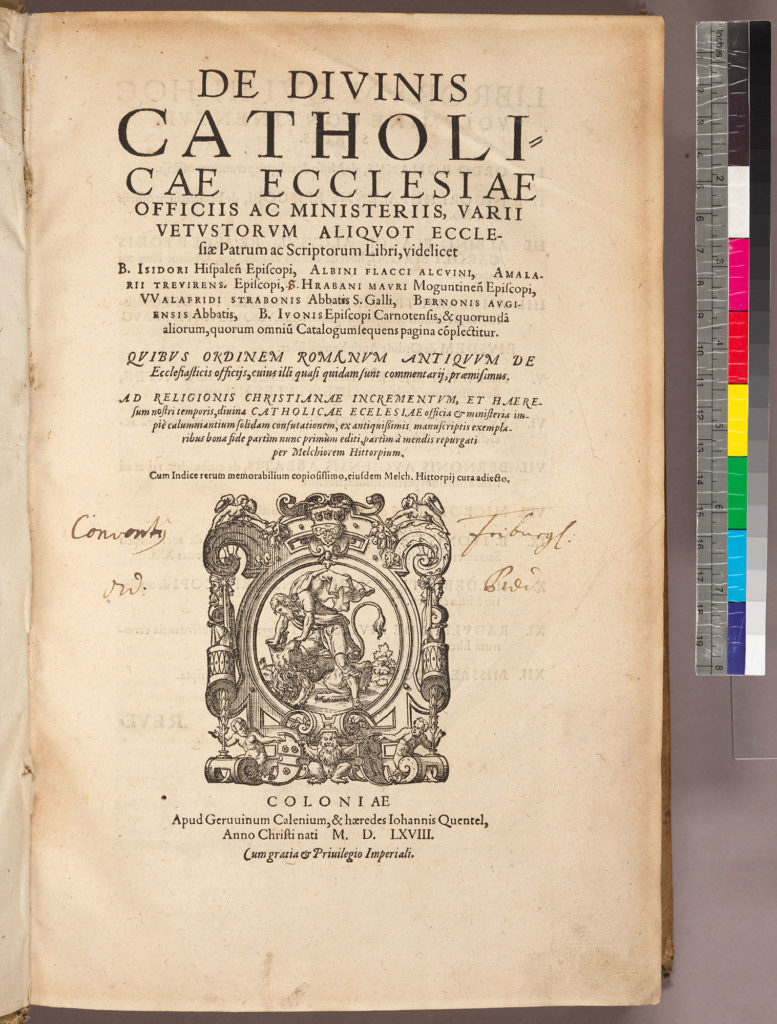
Reflecting the climate of reform, a revision of the Roman Rite, and a renewal of pastoral care during the mid-sixteenth century, we have an imprint that contains a compendium of liturgical description, directions, and commentary, first addressed to Salentin IX of Isenberg-Grenzau, who was Archbishop-Elector of Cologne at the time of publication. This volume was published under the name De divinis Catholicae Ecclesiae officiis ac ministeriis, in 1568 by Gerwin Calenius and Johannes Quentel in Cologne.
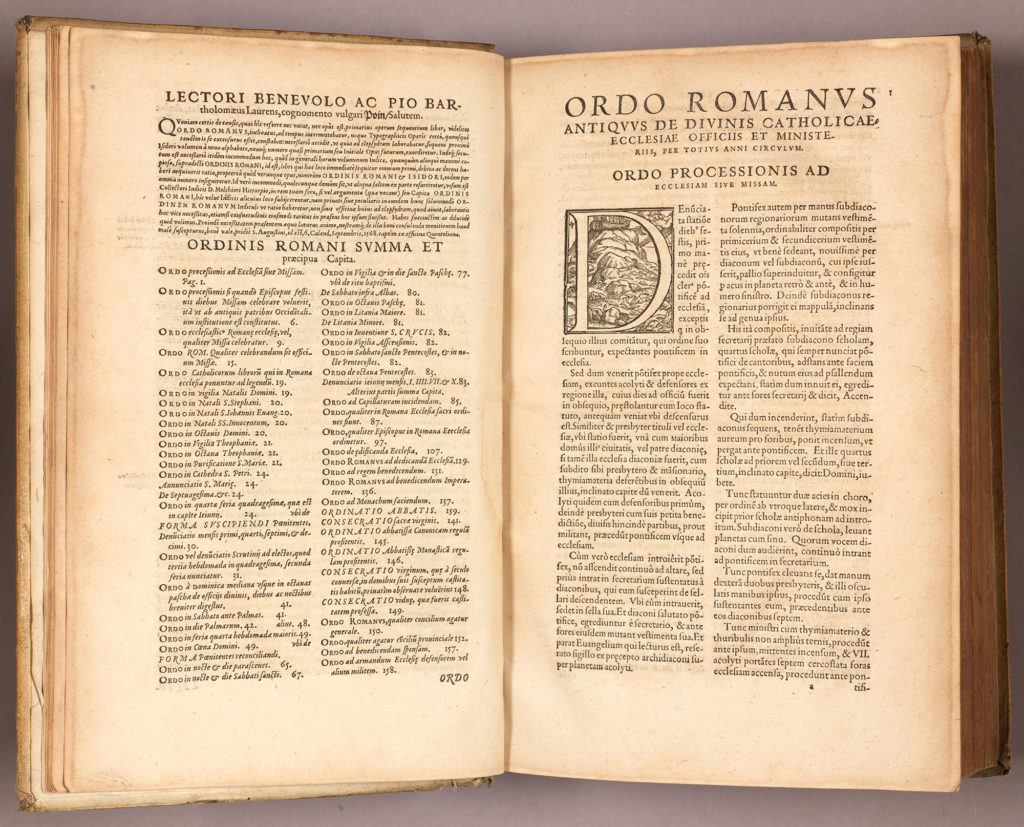
Melchior Hittorp is the compendium’s compiler, editor and author of his own commentary. After introductory material, Hittorp included a reconstruction of the Order of Mass (Ordo Romanus) and other liturgical rites. This is followed by liturgical commentaries in full or excerpted form by Isidore of Seville, Amalarius of Metz, Berno of Rheichenau, Walafrid Strabo, Bernold of Constance, and Ivo of Chartres, among others. Hittorp’s versions of several of these treatises have influenced twentieth-century scholars attempting to create critical editions of commentaries, particularly that of Amalarius of Metz. Most of the authors represented here were bishops whose commentaries were well-known already while they still lived. Their work was mined, either directly or indirectly, by authors of later treatises. Several of these authors’ works were written during or after the Investiture Controversy (1076-1122), in order to illuminate reforms to church practices. That theme is notable here, as Hittorp’s work of 1568 appeared only five years after the Ecumenical Council of Trent closed in 1563. It was convened in 1545, in part, as the church sought to respond with doctrinal and practical definitions to the critiques of the reformers like Martin Luther.8
All of these imprints show the vibrant life of the liturgy and the importance placed on understanding its spiritual reality in the medieval and early modern periods. Although the intent of the author or compiler is sometimes difficult to determine, particularly for those treatises that do not necessarily describe the liturgical practices of a particular location, the modern reader is left with a broader understanding of the actions, prayers, and furnishings used in the ritual, which ultimately helps them understand the medieval world a bit better. And interest in these texts is reviving. Several medieval liturgical commentaries have been recently translated into English and other languages. A partial translation of Durand’s text into English by Timothy Thibodeau, an alumnus of Notre Dame’s Medieval Institute, is available by consulting the Hesburgh Library’s Catalog.
Footnotes
1. Roger Reynolds, “Liturgy, Treatises on,” in the Dictionary of the Middle Ages, Joseph Strayer, ed. (NY: Scribner, 1989) 7: 624B.
2. The Roman Rite is the Latin Rite liturgy observed by Catholic churches in the West. Most European countries used the Roman Rite at the time of the Protestant Reformation (beginning 1517). In 1570, Pope Pius V promulgated the new, unified Roman Rite, later referred to as the Tridentine Rite or the Tridentine Mass, so-called after the Ecumenical Council held in Trent (1545-63) tasked with the reform and unification of the liturgy, among other things.
3. Menard, Clarence, “William Durand’s Rationale divinorum officiorum: Prelminiaries to a Critical Edition,” (Dissertation: Academia Pontificia Gregoriana, 1967), 2: 292.
4. Ekselson, Tyrel C. “States, Institutions, and Literacy Rates in Early-Modern Western Europe,” Journal of Education and Learning (10. 2; 2021), 192. https://files.eric.ed.gov/fulltext/EJ1290524.pdf (accessed July 113, 2023).
5. Michel Albaric, “Éditions imprimées du Rationale de Guillaume Durand,” in Guillaume Durand, Évêque de Mende (v. 1230-1296) Actes de la Table Ronde du CNRS, Mende 24-27 Mai, 1990 (Paris: Éditions du CNRS, 1992), 183-4.
6. Ibid.
7. Ibid, 185.
8. Roger Reynolds, “Liturgical Scholarship at the Time of the Investiture Controversy : Past Research and Future Opportunities,” The Harvard Theological Review, 71.1, 1978), 113-4. https://www.jstor.org/stable/1509778 (last accessed July 11, 2023)
